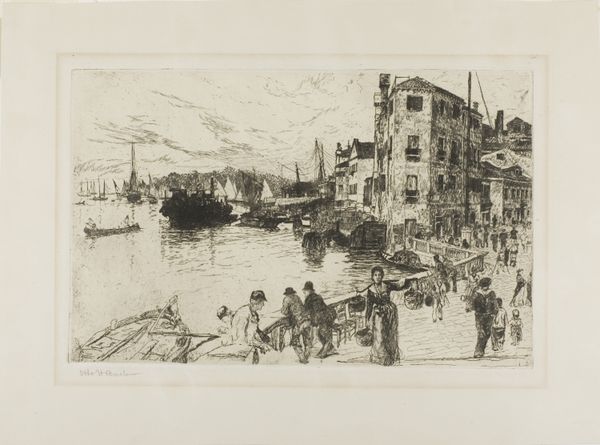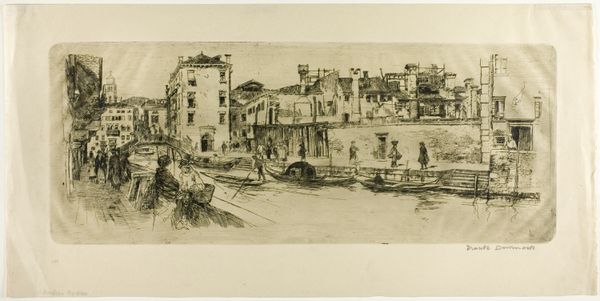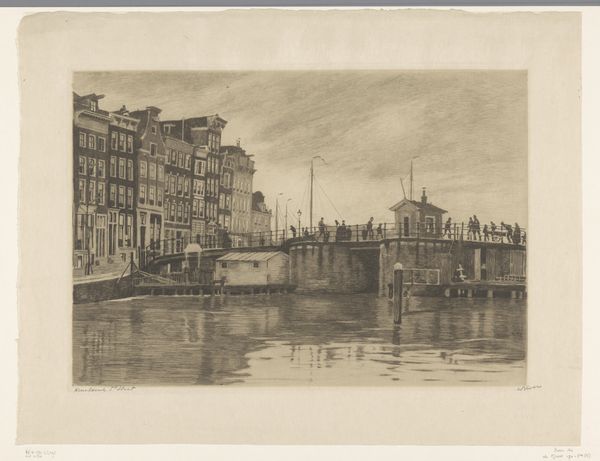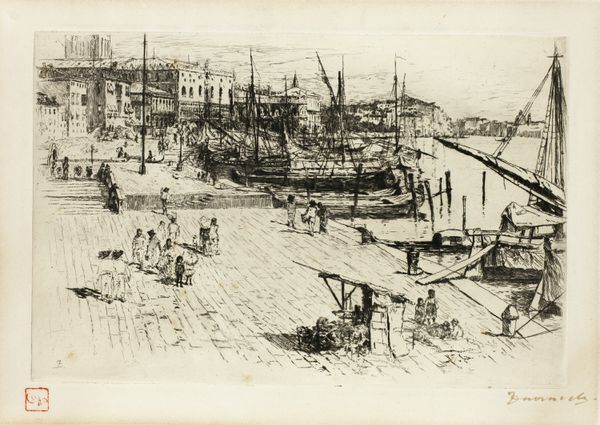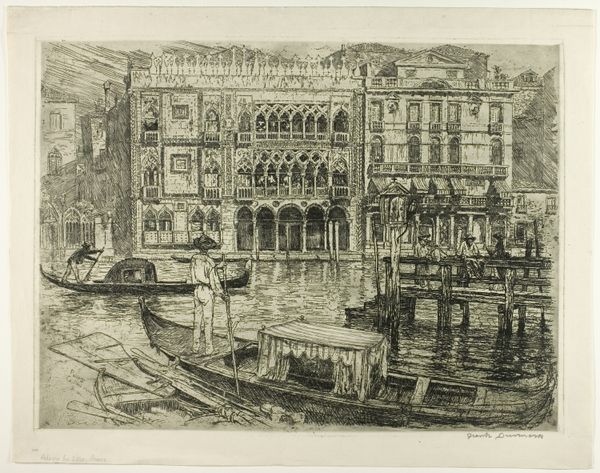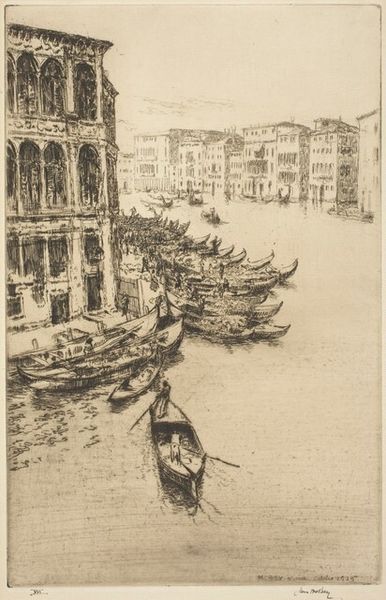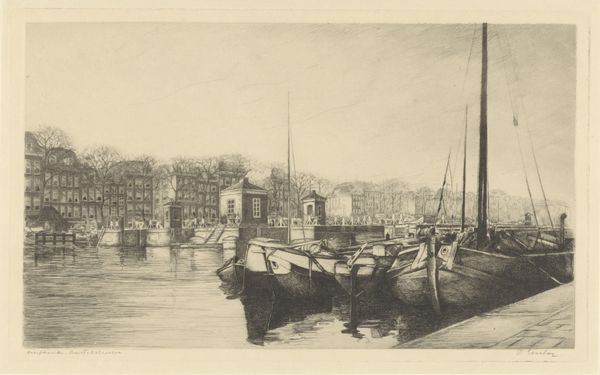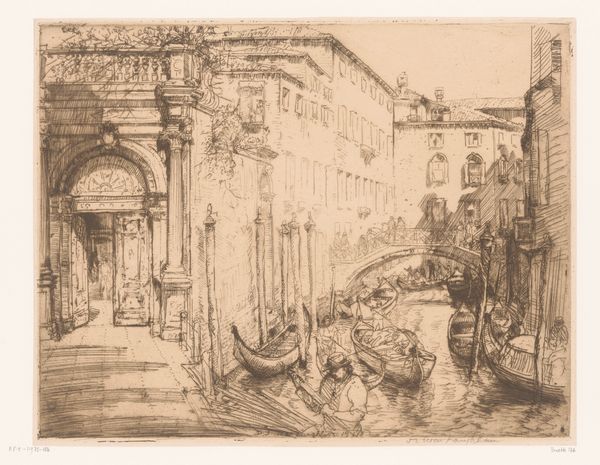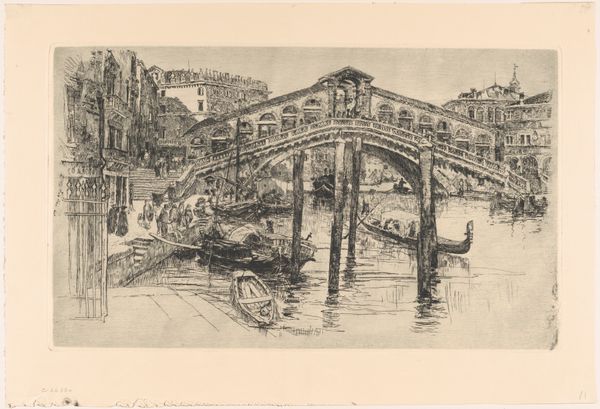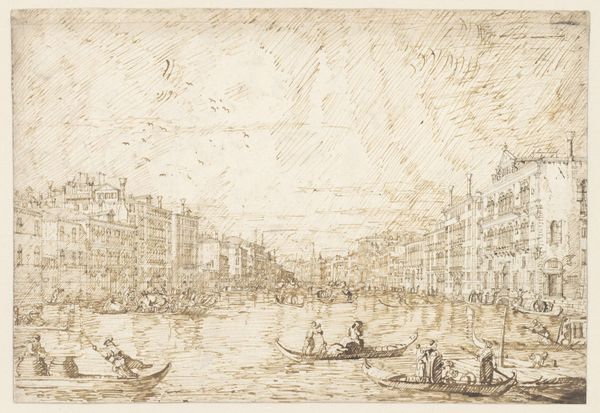
Dimensions: 266 × 378 mm (image); 271 × 382 mm (plate); 299 × 422 mm (sheet)
Copyright: Public Domain
Editor: Here we have Donald Shaw MacLaughlan's "The Market, Venice," created in 1908. It's an etching, printed on paper. It looks quite busy, full of details… a very bustling scene. What do you see in this piece, from your perspective? Curator: This etching immediately draws my attention to its process. The labor involved in creating such intricate lines using the etching technique! And consider the socio-economic context: Venice, as a major trading hub. The market isn't just a scene; it's a representation of consumption, of a whole economic system visualized. How does the artist depict the vendors? Are they romanticized, or does he depict the reality of labor? Editor: That’s interesting, I hadn't thought about the labor involved so directly. I was mostly focusing on the architectural details and the gondolas. So, the medium itself—etching—connects to themes of labor in the subject matter? Curator: Precisely. Think about the acid used, the painstaking work of applying the ground, drawing, and biting the plate. It’s a laborious process mirrored in the market scene itself. What materials are being traded, who controls them and profits from the exchange? The print, multiplied and circulated, can be regarded as merchandise itself, accessible for a wider consumer base than, for example, an oil painting. Does that influence your thinking about the print medium? Editor: Absolutely. Thinking about it as a commodity shifts my understanding completely. I guess I hadn’t considered the materiality of the print itself as being linked to the marketplace it depicts. Thank you! Curator: My pleasure! Considering these prints as both art objects and products certainly offers a different lens through which to view them.
Comments
No comments
Be the first to comment and join the conversation on the ultimate creative platform.

